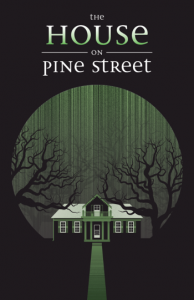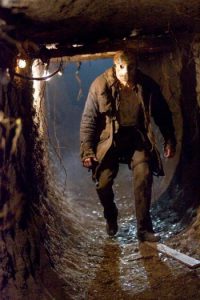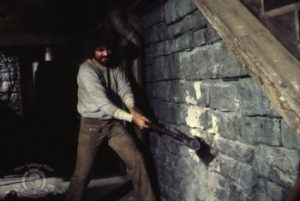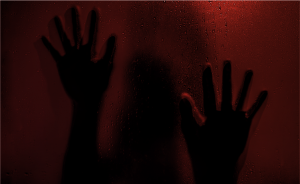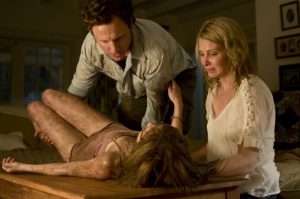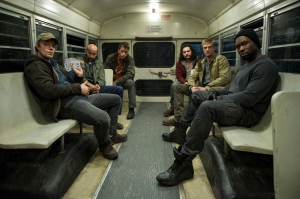The Devils Director’s Cut Review
Ken Russell’s The Devils is perhaps one of the most mistreated great films in all of British cinema. For 40 years now it has been cut and been hidden – rather effectively – first by censors and subsequently by its own distributors, who remain, it appears, deeply afraid of the film and of the reaction to its release.
In 1971 this heady stew of politics and religion, sex and sin, madness and heresy, was cut by the British Board of Film Classification by several minutes, including the wholesale removal of the understandably contentious ‘rape of Christ’ sequence. The MPAA then reduced the film again, cutting another six minutes. The only subsequent release I know of that was even remotely intact was Warner’s Maverick Directors VHS, which has the UK cinema print. In 2000, UK genre critic and writer Mark Kermode, a huge fan of the film and a friend of Russell’s, set out to find the missing footage and, with Russell and his editor, restore it to the film. That version was completed and premièred in the UK in 2005, and a DVD release seemed to be on the cards. It has never happened. Warner continue to sit on the film, and that is a genuine tragedy for lovers of great extreme cinema.
Set in the French town of Loudon in the mid 17th century, The Devils is really the story of an immoral Priest (Father Grandier, played by a seldom more imposing Oliver Reed) and a Nun (Vanessa Redgrave as hunchbacked Sister Jeanne). After a vision which builds into a sexual obsession with Grandier, Sister Jeanne accuses him of causing her to be possessed. This proves politically expedient for Cardinal Richlieu and his men, who want to destroy Loudon’s defences to help them consolidate power, and so a witch hunting priest (Michael Gothard) is dispatched to exorcise the convent and ‘try’ Grandier.
The Devils is a film of almost indescribable excess. From Derek Jarman’s astonishing sets (Loudon’s walls are a character in themselves) to the subversive touches of comedy (Reed fighting off a sword wielding attacker with a stuffed crocodile) to the hysterical scenes in which the ‘possessed’ nuns run riot through the convent to the overblown performances of Reed and, especially, an almost unhinged Gothard, it is almost always turned all the way up to eleven. However, because the tone is largely consistent, and the events of the story often seem stark raving mad (more so for being broadly true), it works, and it works largely because of the conviction with which both cast an director approach it.
Ken Russell is not a man you could accuse of subtlety (indeed here he opens the film with a cross dressing bi-sexual king doing a dance), but here he creates a truly riveting and dazzling spectacle, for too long he’s been dismissed as just a provocateur, but while The Devils is in many ways an excess drenched B-Movie (Nuns! Priests! Torture! Sex!) it is also an art film, and incredibly visually rich and composed. The convent is perhaps particularly stunning, with its black and white design providing a mirror image of the sisters habits and the often sloping or unevenly arched rooms reflecting Sister Jeanne’s hunched back. Many of the film’s most extreme and visually memorable scenes revolve around the nuns, be it Sister Jeanne’s vision of a crucified Grandier, whose stigmata she attempts to lick clean in another clearly controversial moment, the massed hysteria of the scenes in which the nuns ravage witch hunting Father Barre (Gothard) before ripping a huge crucifix from the wall for the infamous ‘rape of Christ’ sequence, or simply the way that Sister Jeanne seems to glide through the convent, an environment that often appears designed around her.
These and other images, both beautiful and terrible, stick in the head long after the credits have rolled, but this is not just a feast for the eyes, as The Devils boasts an array of fantastic (if rather large) performances. Oliver Reed was, as I was growing up as a movie fan, more famous being drunk than for acting, and so it was a surprise to see him here; young(ish), handsome and forceful as Grandier; a priest with a taste for the ladies, but also a devotion to both his job and his town. He’s incredibly impressive in the many scenes in which he is afforded the opportunity to give a bellowed defence against the accusations of witchcraft he faces, but what is less noted about Reed is how subtle he could be, and here his performance benefits from the contrast between the bombastic public face of Grandier and the quieter man we see when he has an audience of only a few, be it his new wife (Gemma Jones) in their marital bed or his torturers as they try to extract a false confession from him.
Equally effective is Vanessa Regrave, whose performance is a masterpiece of offputting physical acting (the constantly tilted head, which makes you feel constantly somewhat ill at ease about Sister Jeanne) and a genuinely brilliant and compelling portrayal of total sexual mania. Russell obviously delights in setting Redgrave’s serene beauty against the madness of her character and the extremity of some of the things he has her do. In a scene that I’m stunned was never cut by the BBFC Jeanne, dressed in white robes, licks the wounds of a Christlike Grandier; the overwhelming impression being that we’re watching Mary perform a blatantly sexual act on Jesus. Redgrave goes all out with this performance, but never quite answers the question of whether Jeanne is truly going mad or whether her actions are driven by pure, cold, malice (an early scene in which she attacks Gemma Jones would probably argue for the latter, but the answer is never definitive). Either way she’s brilliant here, giving a performance that can be funny, creepy, pathetic, and even outright scary. Perhaps the only thing it isn’t at some point is dull.
The supporting players all turn in solid work, but two bear special mention. Gemma Jones has, in a way, the most challenging role in the film, because in amongst all this madness she has to be simple, down to earth and real as Grandier’s secret wife Madeline. Rather than throw the film off balance, Jones’ unaffected simplicity and the fundamental decency of her character provides a balancing influence, it also, of course, helps that she’s a wonderful actress, and brings real conviction to the character, especially in the confession scene when a slip of the tongue reveals her love for Grandier. Michael Gothard’s performance as Father Barre is also notable, if only for being so completely, deliriously unhinged. Barre might be the most corrupt figure in the film, or simply the most fervent, it’s never really clear, but certainly it’s notable that Russell often casts him as the butt of a joke, especially the one that occurs just before the ‘rape of Christ’ in which he parades a ‘religious relic’ given to him by the King, only for the king to reveal that it is in fact an empty box. In an especially troubling way, Gothard’s character and performance is probably the one with the most pronounced contemporary resonance, recalling some of America’s madder evangelists with his ‘healing’.
It’s not hard to see why The Devils has been so troublesome for censors and distributors; the film has a fevered atmosphere that is tough to cut into. This Director’s Cut isn’t hugely different – as far as I recall – from the BBFC cut of the 70′s, with the only substantial addition being the roughly two minutes of footage restored to the ‘rape of Christ’ sequence. It’s a valuable addition though, serving only to accentuate the extremity of the film’s maddest section (the mass ‘possession’ and ‘exorcism’ of the convent) and the question of how far the Nuns are doing what they think is expected of them to prove they have been possessed and to save their lives.
Though it is set nearly four centuries ago, and was made four decades ago, The Devils still feels incredibly relevant. As a film about the things that religious and political differences can drive people to do to one another (okay so we’re no longer so upfront about it as to tie them to a stake and burn them), it really couldn’t be more contemporary, or more troubling, if it tried. Beneath the shouting and the nudity it’s actually a profoundly thoughtful film on a political and a religious level and, as one Christian academic has described it; a film about blasphemy (to my mind Barre’s), but not a blasphemous film. I hope that one day soon Warner will see the light and allow a DVD and Blu Ray release of this neglected and maligned classic. Until then, I can only suggest that you write them some strongly worded emails, and get to any of the infrequent special screenings of this restored masterpiece that you can.
9 out of 10



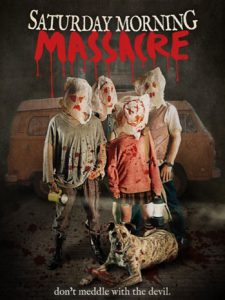
![Love in the Time of Monsters [Review]](https://www.horror-movies.ca/wp-content/uploads/2021/04/Love-in-the-Time-of-Monsters-Poster-350x531-1-198x300.jpg)
![Fantasia 2018: Puppet Master: The Littlest Reich [Review]](https://www.horror-movies.ca/wp-content/uploads/2021/04/PMLR12-UDO-KIER-350x216-1-300x185.jpg)
![[Horror Short Review] Cindy Maples’ Random](https://www.horror-movies.ca/wp-content/uploads/2021/04/Random-Poster-350x524-1-200x300.jpg)
